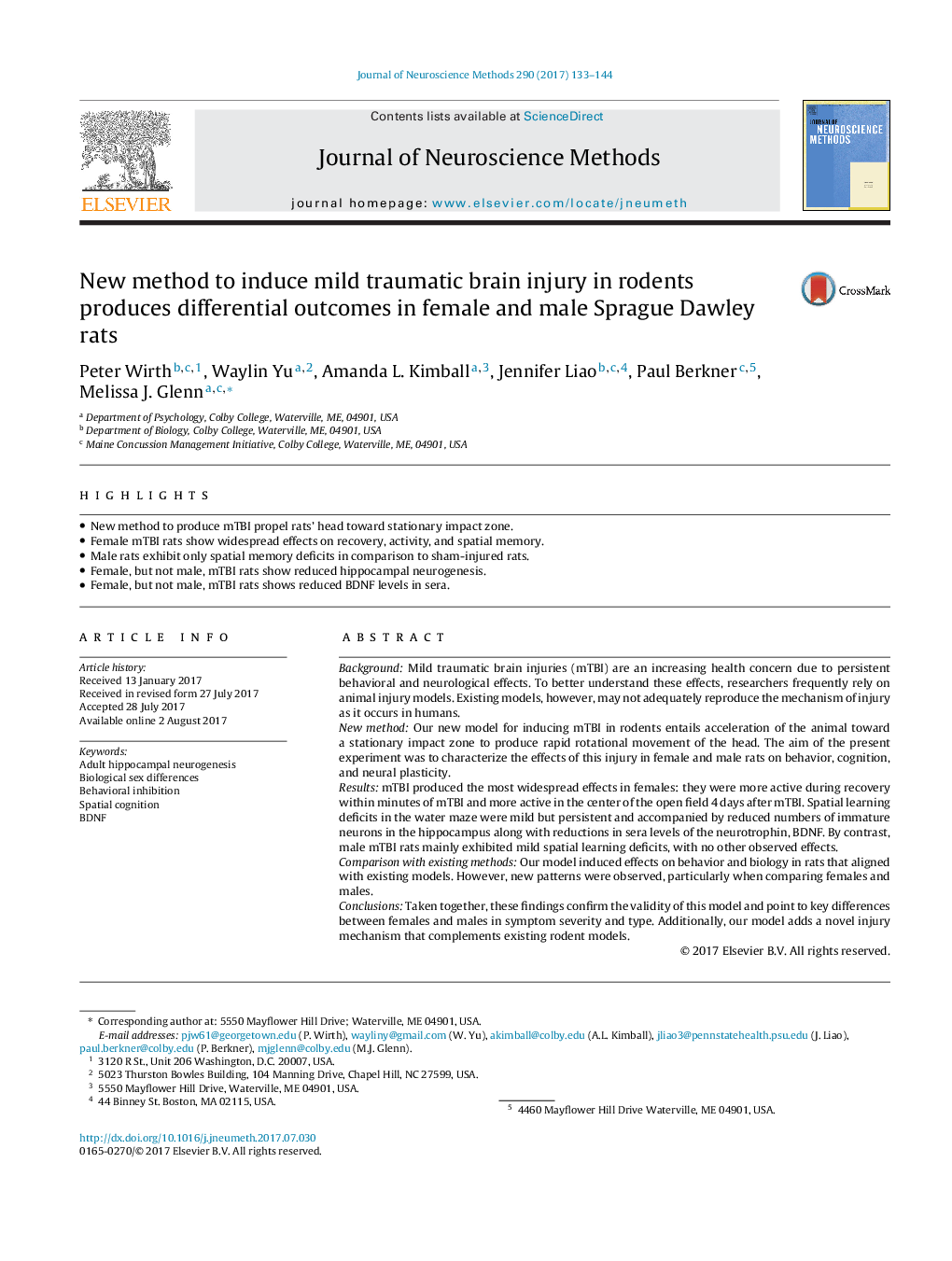| Article ID | Journal | Published Year | Pages | File Type |
|---|---|---|---|---|
| 5737163 | Journal of Neuroscience Methods | 2017 | 12 Pages |
â¢New method to produce mTBI propel rats' head toward stationary impact zone.â¢Female mTBI rats show widespread effects on recovery, activity, and spatial memory.â¢Male rats exhibit only spatial memory deficits in comparison to sham-injured rats.â¢Female, but not male, mTBI rats show reduced hippocampal neurogenesis.â¢Female, but not male, mTBI rats shows reduced BDNF levels in sera.
BackgroundMild traumatic brain injuries (mTBI) are an increasing health concern due to persistent behavioral and neurological effects. To better understand these effects, researchers frequently rely on animal injury models. Existing models, however, may not adequately reproduce the mechanism of injury as it occurs in humans.New methodOur new model for inducing mTBI in rodents entails acceleration of the animal toward a stationary impact zone to produce rapid rotational movement of the head. The aim of the present experiment was to characterize the effects of this injury in female and male rats on behavior, cognition, and neural plasticity.ResultsmTBI produced the most widespread effects in females: they were more active during recovery within minutes of mTBI and more active in the center of the open field 4Â days after mTBI. Spatial learning deficits in the water maze were mild but persistent and accompanied by reduced numbers of immature neurons in the hippocampus along with reductions in sera levels of the neurotrophin, BDNF. By contrast, male mTBI rats mainly exhibited mild spatial learning deficits, with no other observed effects.Comparison with existing methodsOur model induced effects on behavior and biology in rats that aligned with existing models. However, new patterns were observed, particularly when comparing females and males.ConclusionsTaken together, these findings confirm the validity of this model and point to key differences between females and males in symptom severity and type. Additionally, our model adds a novel injury mechanism that complements existing rodent models.
